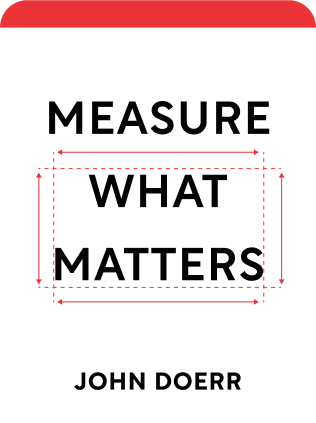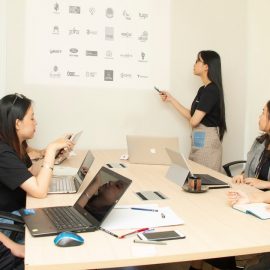

This article is an excerpt from the Shortform summary of "Measure What Matters" by John Doerr. Shortform has the world's best summaries of books you should be reading.
Like this article? Sign up for a free trial here .
What are some OKR examples for project management? How can using OKRs help you reach your project management goals?
In both OKR examples for project management below, the organizations realized they were not reaching their project goals and had to consider why. Then, they implemented OKRs in order to reframe their projects and work toward success.
Read more about these two OKR examples for project management.
OKR Examples for Project Management
Read about OKR examples for project management below.
Example 1: ONE Campaign
OKRs can also help you establish a new culture when you discover the failings of your current one. In big organizations, project management is important. OKR examples for project management can show you how OKRs can work.
After rockstar Bono established the ONE Campaign, an activist coalition, he discovered a problem in their culture: They were working on Africa rather than with Africa.
One of the organization’s objectives was to ease poverty and the ravages of AIDS in Africa. Bono and his ONE Campaign team felt they knew what Africans needed, but they collaborated not with African governments, but with governments in North America and Europe, the continents with the most money and power.
One day at a board meeting, John Doerr asked, “Who’s the client here?” When the board told him that the clients were the poorest and most vulnerable people in the world, Doerr asked if these people had a “seat at the table,” both metaphorically and literally. They didn’t. Their culture and goals were tainted by a messiah complex.
Bono and the ONE team used OKRs to change the organization’s culture, which resulted in one of the most interesting OKR examples for project management.
ONE Campaign OKR Example:
Objective: Use the perspectives of Africans to guide ONE’s work, align ONE’s work with the priorities of Africans, and use ONE’s political capital to lobby for policy changes in Africa.
Key Result #1: Hire three African-based employees by April, and two African board members by July.
Key Result #2: Create an African Advisory Board.
Key Result #3: Develop relationships with 10-15 African thinkers and leaders who consult on ONE’s work.
Key Result #4: Take four trips to Africa during the year.
Once they started hiring African board members, the team realized that some of their priorities needed to shift. One new board member pointed out that corruption, which cheated developing countries of a trillion dollars annually, was currently a bigger problem than HIV/AIDS. Consequently, ONE shifted its objectives to lobbying for policies that increased transparency in governments and businesses.
Example 2: The Gates Foundation
Another one of the more interesting OKR examples for project management is the Gates Foundation, a large organization with many project. One focus of the Gates Foundation is vaccines. To make a broad, vague goal trackable, they used the 80/90 rule: 80% of the targeted districts will have at least 90% coverage through vaccination.
The foundation used tracking throughout the OKR cycle to decide whether to keep, revise, or pull certain OKRs. Sometimes, they realized they were using the wrong data set entirely to track their progress. How they changed their OKRs offers an interesting OKR example for project management.
For instance, another Gates Foundation objective is to end world hunger. One of the foundation’s leaders describes this hypothetical situation: A key result toward the objective of ending hunger might be to double yam production in a particular area. Luckily, one of your partners has discovered a seed that has the potential to increase yam production. You measure progress by the number of yams produced. But if you find out that nobody will eat the yams from the new seed because they take four times longer to cook than traditional yams, the number of yams produced is irrelevant. You’ve been measuring the wrong thing. The Gates Foundation is quick to pivot when tracking allows them to see that their data and their objective aren’t aligned.

———End of Preview———
Like what you just read? Read the rest of the world's best summary of John Doerr's "Measure What Matters" at Shortform .
Here's what you'll find in our full Measure What Matters summary :
- How Google uses OKRs to rally 100,000 employees in the right direction
- How to avoid setting useless OKRs, and how to set great ones
- Key subtle behaviors your team must master to make OKRs work






